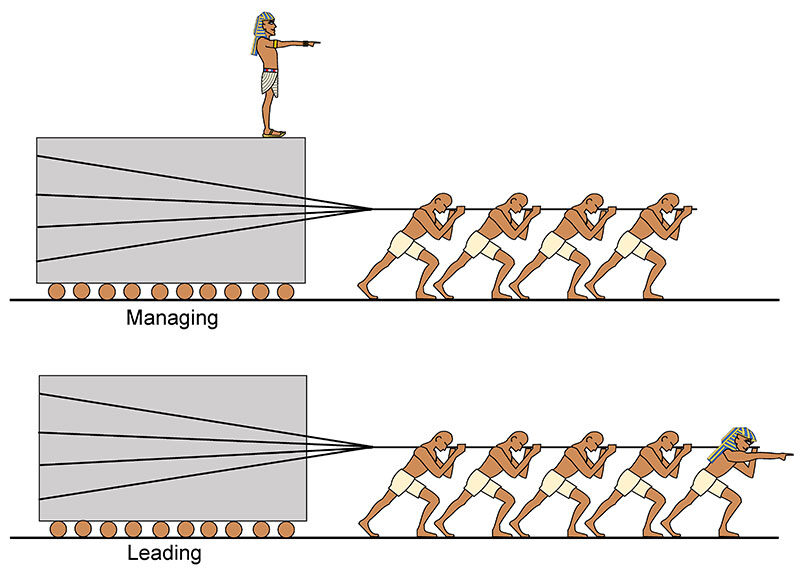During these challenging times battling the coronavirus, we need strong leaders in government and the private sector. However, I find people in leadership positions often confuse leading with managing. There is a dramatic difference between the two.
As a young architect, I worked on a project team led by a Project Manager. I thought, “That’s the boss, the person who gives directions. If I become a manager, I’ll get a nice office. People will come in, I’ll tell them what to do, and they’ll take care of it.” I eventually became a project manager myself and learned that managing is not what it’s all about. Executives who manage aren’t leading. People don’t follow managers. Instead, they start watching the clock for quitting time.
People will follow a leader who shows confidence, enthusiasm and clarity about the way forward. This is something Dwight Eisenhower demonstrated, first as a general, and then as President. He defined leadership as:
“The art of getting someone else to do something that you want done because he wants to do it, not because your position of power can compel him to do it.”.
Whether it’s a project manager, a managing principal or some other kind of manager, management is not what people need. People need leaders at all levels to be out in front with the attitude that they won’t ask anyone to do something they won’t do themselves. Whether designing a building or fighting a coronavirus, people will follow if they have a leader.
Managers direct. “Do this, do that,” they tell their people. Leaders encourage, which sounds more like “Let’s solve this together.” When encouraged by leaders, people become unshackled from following orders and start putting their own ideas into practice. It’s exciting to see the good ideas people come up with, and always a thrill to see someone exceed what they think they can do.
Here’s another way of explaining it. There’s a famous cartoon of Pharaoh building the pyramids, which I have redrawn below. In the top panel, Pharaoh is standing over the workers while shouting and snapping a whip. That’s managing. In the bottom panel, Pharaoh’s got a rope over his shoulder, pulling like everyone else—and he’s out in front of the team. That’s leading.

Cartoon by Patrick MacLeamy
The best leaders are selfless like this. Think of all the frontline officers who put themselves in the perilous position of going first as they lead their troops into battle. They are not asking their troops to do anything they would not do themselves. They are right there with them. Leadership is about the mission, not the individual.
In my new book, Designing a World-Class Architecture Firm, I detail some of the things you can do to lead rather than manage, and I show how it can transform your firm. Here are some examples:
- Get out of your office. When I became Managing Principal of HOK’s San Francisco office, I finally had a nice office of my own, just like I had imagined, but found that leadership happened elsewhere. I learned how important it was to get out of that little room and listen to what clients or HOK people had to say about our projects. The most challenging part of problem solving is to identify complications early, before they grow into real trouble and the best way to do that is to be out among your people working alongside them.
- Ask questions and really listen. One of the biggest things I have learned in my years as a leader is to be patient with people and give them room to voice their own thoughts. I learned to listen to people first, to understand their problem or point of view. Usually everything on our projects was going smoothly, but not always. Often HOK project team members were reluctant to speak openly about problems, but a little encouragement and lots of listening generally worked.
- Explain why, not just what. After you have listened, instead of telling people what to do, explain why a certain result is important and ask for their suggestions on how to achieve it. Involving everyone in problem-solving is empowering and motivating. If you take the time to explain the “why” to people, you’ll accomplish more.
- Be skeptical of titles. Manager is an overrated term. People love titles with the word manager included. Director is another favorite, Director of Design, or Director of Interiors. How about Director of Coffee Making? I have learned to be skeptical of titles, and when people are in a big hurry to impress me with their lengthy title, they are probably not leadership material. I would sure like to impart this lesson to others: It doesn’t matter what you’re called; It matters what you do. Actions are more important than words.